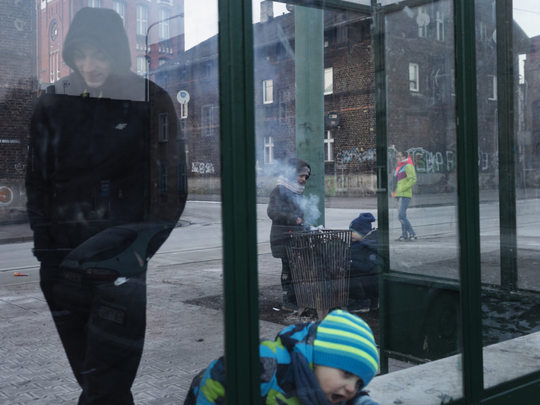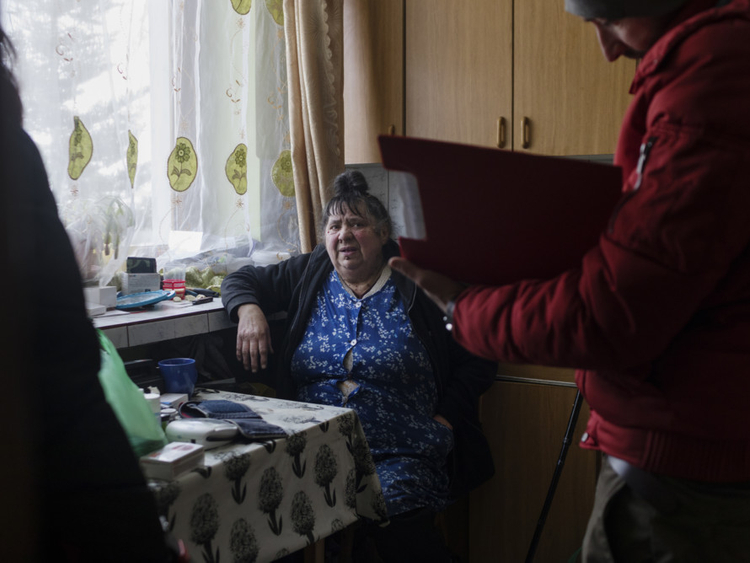
ZAR MOUNTAIN, Poland:
High atop the ski lift at Zar Mountain in southern Poland, the villages below disappear. At first, they seem obscured by morning fog. But the yellow haze does not lift. It hangs heavy, the contrast with the white snow making it clear that something is off.
What is off is the air. Poland has some of the most polluted air in Europe, and 33 of its 50 dirtiest cities. Not even mountain retreats are immune.
48,000 Poles die each year from poor air quality. |
The problem is largely a result of the country’s love affair with coal. Like elsewhere in Poland, most of the homes in the villages below Zar Mountain are still heated by coal. Some 19 million people rely on coal for heat in winter. In the European Union, 80 per cent of private homes using coal are in Poland.
Coal, commonly referred to as “black gold,” is seen as a patriotic alternative to Russian gas in this country, which broke away from Soviet control three decades ago. Burning coal is part of daily life.
Many street corners, near bus and tram stops, feature containers known as braziers that burn coke, a coal derivative that is chiefly carbon. On a recent morning in Swietochlowice, to the north, children threw in sticks and paper, sucking in the fumes.
Waiting for funding
He has been waiting for local government funding to change to a newer, cleaner-burning model. But it is not clear when the money will arrive, or if he will qualify. “I think all the promises come with elections,” Machno said. But once the campaigns are over, he said, all the grand ideas fade away.
In the meantime, the smog is everywhere. Many have moved to escape the pollution. Andrzej Bargiel, a well-known Polish mountaineer, used to live in downtown Zakopane, where the air gave him constant headaches. He feels better since relocating above the city, he said.
Oliwer Palarz, an activist with the Rybnik Smog Alert group, makes his children Antoni and Tymon wear anti-smog masks while outside. He is suing the Polish government, claiming that its lack of action on pollution has violated his civil rights.
Many are not optimistic things are headed in the right direction. The European Court of Justice ruled that Poland infringed air quality laws between 2007 and 2015 by continuously exceeding pollution values.
While the European Union continues to play a leading role in action to limit global warming, Poland is likely to be an outlier for some time.
Poland’s appetite for coal is so great, it is even importing more of it from the United States. In Belchatow, Poland maintains Europe’s largest coal-fired utility plant. It is the largest carbon emitter in Europe.
Out with the outdated furnaces!
Driving through small villages near Rybnik, about two hours to the northwest of the Zar mountain and one of the cities ranked as the European Union’s most polluted, smoke poured out of the houses.
It was evening, but strangely, bright as smoke particles diffused the light from street lamps, creating an eerie orange glow. “This doesn’t look right,” a father said as he hurried past with his son, his jacket pulled above his mouth.
In Krakow, with its majestic castle looming over the old town, many of the buildings are still equipped with furnaces dating back decades. At the beginning of the winter, coal deliverymen make the rounds. But now so do eco-consultants for the local government, which has undertaken one of the most ambitious projects in the country - to wean people off burning coal or wood.
The Krakow government has outlawed the use of the cheapest, most polluting coal, and by 2019, aims to ban all burning of coal and wood.
Other municipalities, like Katowice, about an hour’s drive west of Krakow, are using drones to monitor household emissions. But overall action has been lacking from the government of the which has long championed the politically powerful coal industry.
Children are fighting to breathe clean air
As the toll mounts from the pollution problem, especially for children, the government is also coming under greater pressure, including the prospect of fines for violating EU standards.
Some 48,000 Poles are estimated to die annually from illnesses related to poor air quality. Greenpeace estimated that 62 per cent of Poland’s kindergartens are in heavily polluted areas.
In response, the government announced that it will spend $8.8 billion by 2028 to combat smog. “We don’t want our children to associate winter with masks on their faces, but with snow and sleds and snowmen,” a resident said.
A physiotherapist by profession, Jolanta Sitarz-Wojcicka became an activist two years ago, when she had a baby and realised that the air outside was so bad she could not leave her home without risking the health of her newborn.
She took up the cause in her hometown of Zakopane, the southeast of the mountain, and now it is her sole focus. Winning the war on smog requires changing habits deeply embedded in the culture. She starts with educating school children.
Thanks to a grant from the European Union, she can dedicate herself full time to the cause. But she is worried.













